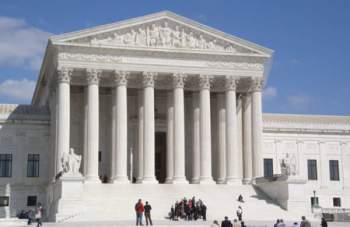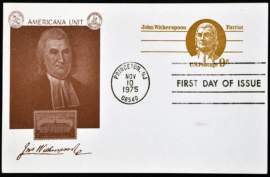
Current Membership of the Supreme Court

Popular In Constitution
Purpose Of Lifetime Appointment And Pros And Cons Enumerated Powers Bicameral Legislature Background Article 3 Of The Constitution We The People 1st Amendment Who Wrote The Constitution Judicial Review Equal Protection Clause Three Fifths Compromise 10th Amendment 5th Amendment
In the discussions that have been held of the various Supreme Courts found throughout American history, one of the most pressing questions has been the current membership of those bodies. Supreme Courts are grouped in historical terms by the identity and duration of term of their various Chief Justices, but the backgrounds and philosophies of the individual Associate Supreme Court Justices has also exercised a decisive impact on American history.
At present, the Supreme Court is being administered by Chief Justice John G. Roberts. One important aspect of Supreme Courts is their political orientation, toward which end the current court is considered more conservative than liberal, both due to Roberts' views and the judicial leanings of a majority of the individual Supreme Court Justices.
Roberts has been the Chief Justice since 2005, when he was
nominated by the George W. Bush administration and approved by Congress to
replace the previously sitting Chief Justice, William Rehnquist (1986-2005). In view of the recent start of his term, the Roberts
Court can be assumed to likely be in place for some time. The individual terms
of Supreme Court Justices are not decided by the informal determination of
Supreme Court "eras", and are not unlikely to last through two Supreme
Courts.
In regard to the Supreme Courts
during which the sitting Supreme Court Justices began their service, most of
the members now on the bench began during Rehnquist's term. They include: Antonin
Scalia (appointed in 1986), Anthony Kennedy (1988), Clarence Thomas (1991),
Ruth Bader Ginsberg (1993), and Stephen Breyer (1994). The Roberts court has
thus far seen two appointments: Samuel Alito in 2006 by the Bush White House,
and Sonia Sontamayor in 2009 by Barack Obama. The longest term of any of the
currently sitting Supreme Court Justices is that of John Paul Stevens, who
began in 1975 by appointment by President Gerald Ford under the Burger court
(1969-1986).
In addition to Roberts, the identification of the
current membership as conservative in comparison to previous Supreme Courts
rests on the consensus on Justices Scalia, Thomas, and Alito. In contrast to
these Supreme Court Justices, Ginsburg, Breyer and Stevens have long been
identified with liberalism, while Sontamayor is generally thought of as a liberal,
though more in regard to past legal decisions and public statements than any
comprehensive pattern thus ascertained on the bench.
The political identification of Justices, and thus, of Supreme Courts can differ in practice from what might have been assumed by nominating presidents, in which regard Justice Kennedy has been identified as conservative in nature but sometimes inclined toward political decisions. The recently announced retirement of Justice Stevens has raised a similar issue among commentators in regard to President Obama's proposed replacement of legal scholar Elena Kagan.
Kagan has been identified in a broad sense with the Democratic, liberal consensus. Her past decisions have also revealed a conservative streak. If approved, Kagan, currently the United States Solicitor General, would be the only member who has not previously been a judge.



















